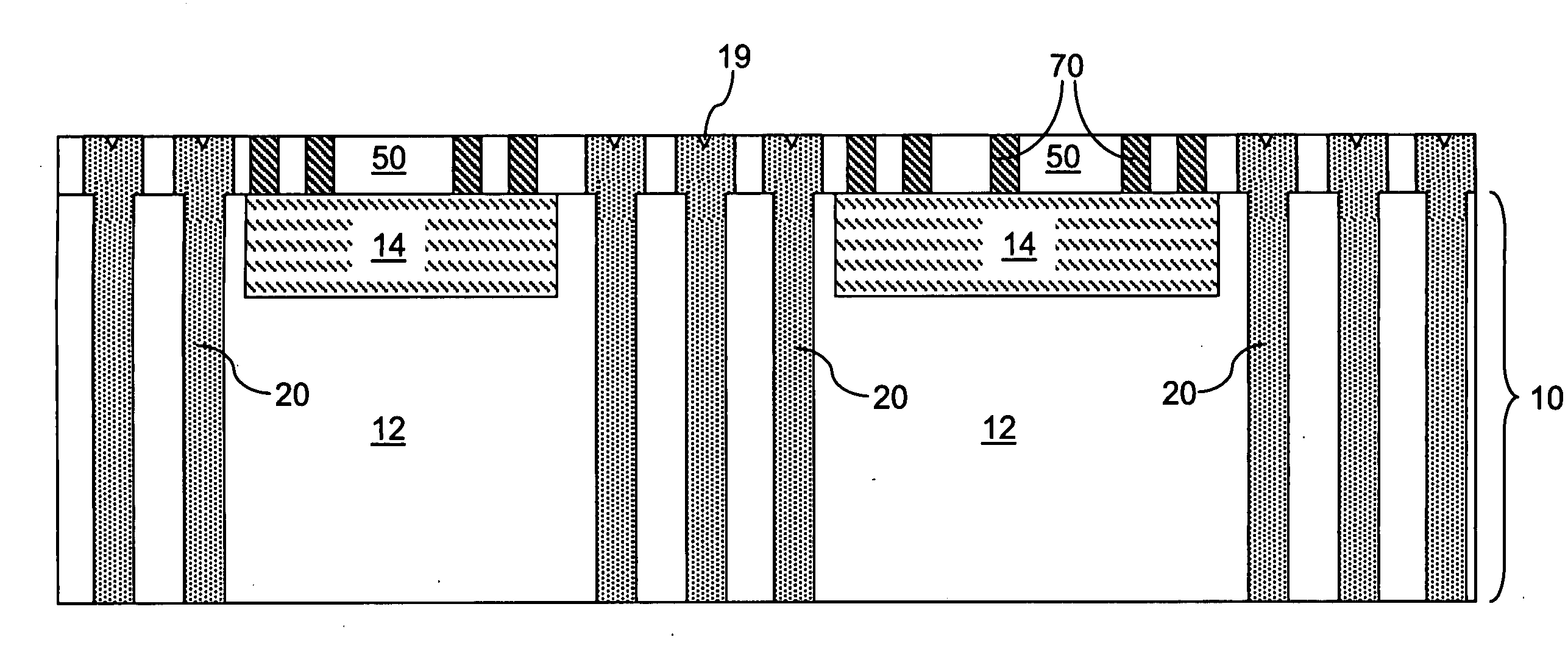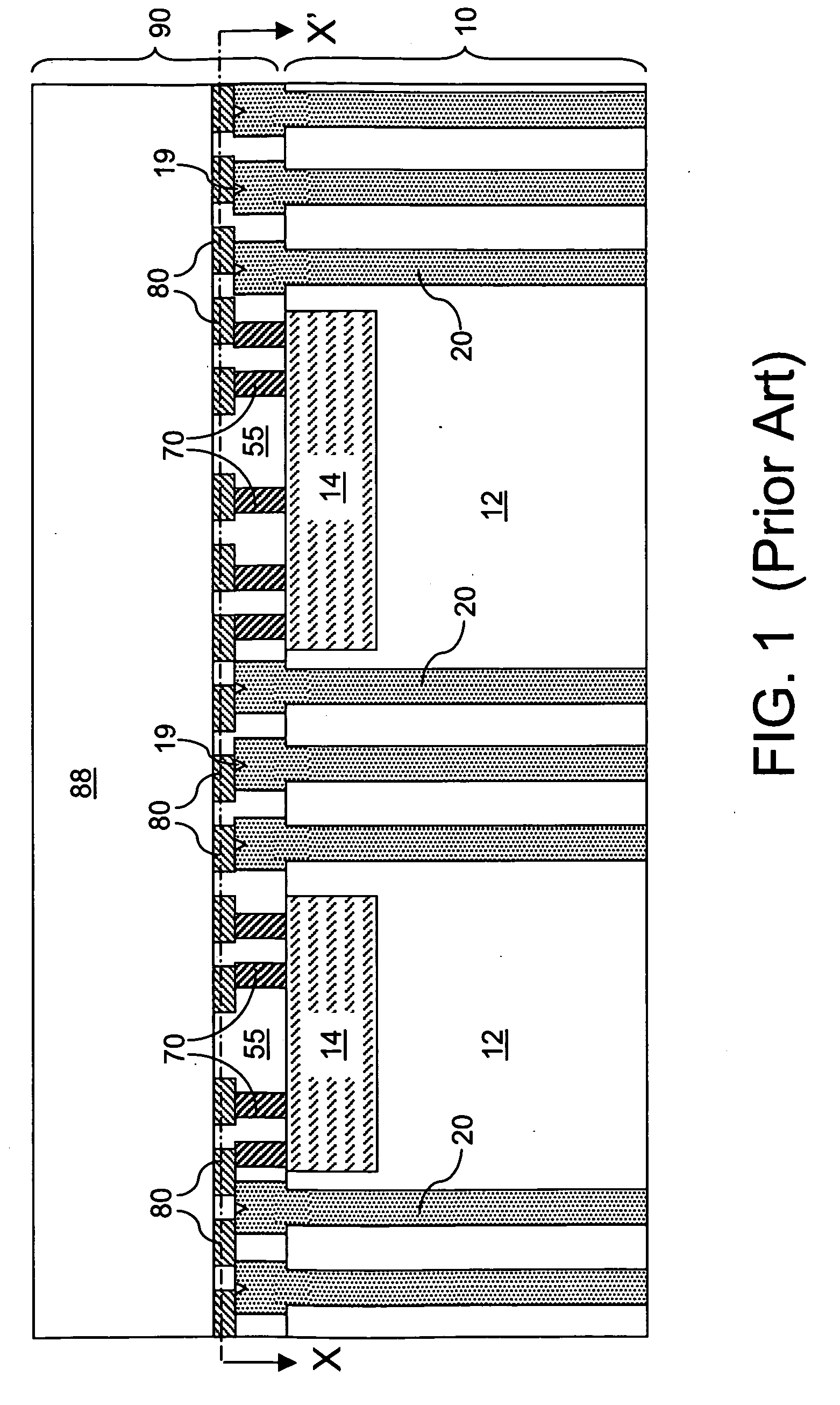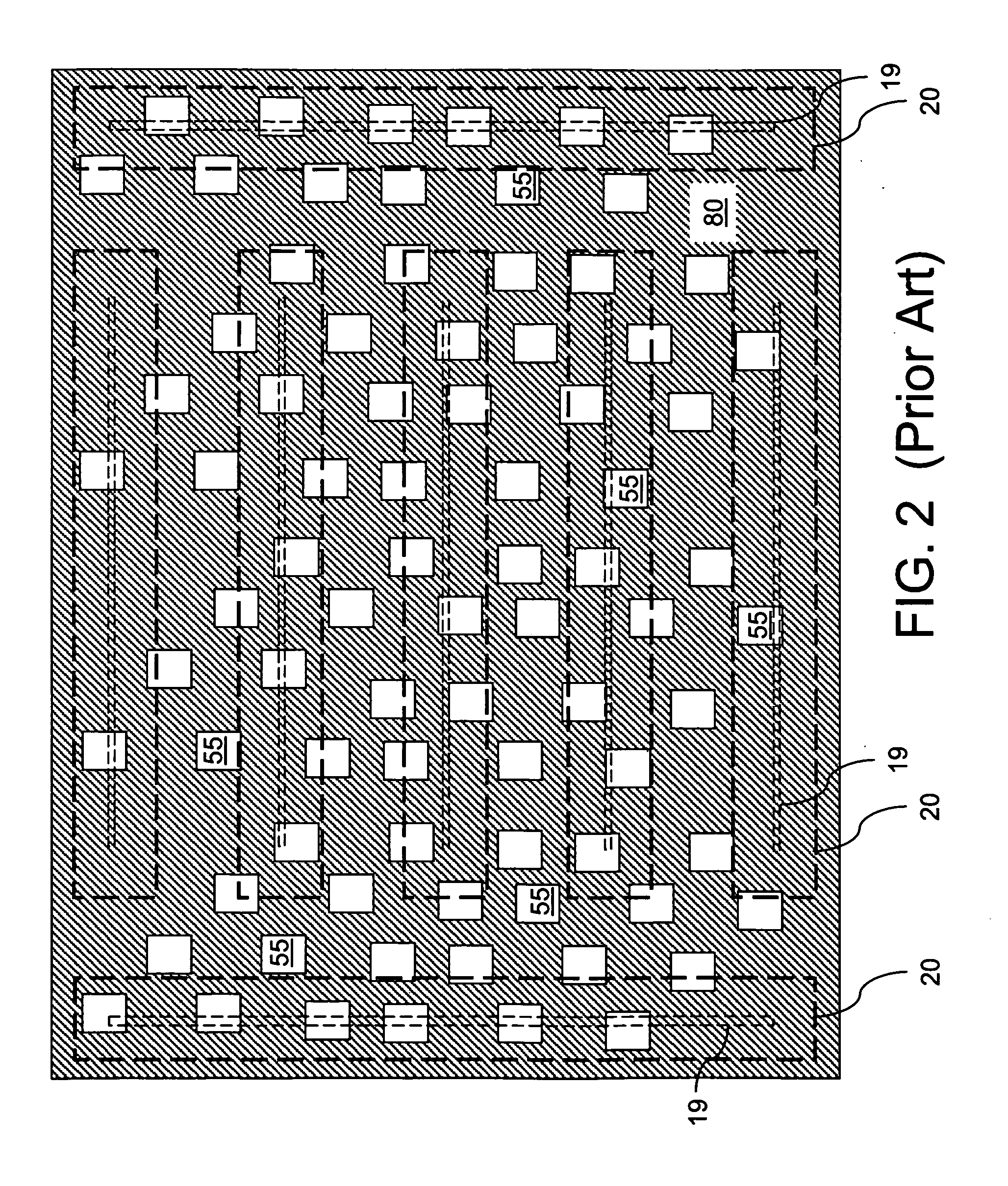Metal wiring structure for integration with through substrate vias
a metal wiring and substrate technology, applied in the direction of semiconductor devices, semiconductor/solid-state device details, instruments, etc., can solve the problems of degradation of performance and/or reliability, limited current carrying capability adversely affecting the performance of prior art semiconductor chips, and seam b>19/b> formation, etc., to achieve enhanced reliability and increase current carrying capability
- Summary
- Abstract
- Description
- Claims
- Application Information
AI Technical Summary
Benefits of technology
Problems solved by technology
Method used
Image
Examples
first embodiment
[0071]Referring to FIG. 5, a horizontal cross-sectional view of the exemplary semiconductor structure according to the present invention is shown along the plane X-X′ of FIG. 4. Locations of sidewalls of the TSVs 20 that abut the at least one line-level metal wiring structure 80 are shown in thick dotted lines as if a top-down see-through view was employed to illustrate the location of an array of cheesing holes relative to the sidewalls of the TSVs 20. The area of the seams 19 in the TSVs 20 are schematically represented by thin dotted lines as if a top-down see-through view was employed to illustrate the location of the array of cheesing holes relative to the seams 19.
[0072]The at least one line-level metal wiring structure 80 and the metal-wire-level dielectric layer 60 complimentarily fill the entirety of the a layer between top surfaces of the TSVs 20 and the top surfaces of the metal-wire-level dielectric layer 60. The entirety of the sidewalls of the at least one TSV 20 abuts...
second embodiment
[0077]Referring to FIG. 6, a horizontal cross-sectional view of the exemplary semiconductor structure according to the present invention is shown along the plane X-X′ of FIG. 4. Locations of sidewalls of the TSVs 20 that abut the at least one line-level metal wiring structure 80 are shown in thick dotted lines as if a top-down see-through view was employed to illustrate the location of an array of cheesing holes relative to the sidewalls of the TSVs 20. The area of the seams 19 in the TSVs 20 are schematically represented by thin dotted lines as if a top-down see-through view was employed to illustrate the location of the array of cheesing holes relative to the seams 19.
[0078]The at least one line-level metal wiring structure 80 and the metal-wire-level dielectric layer 60 complimentarily fill the entirety of the a layer between top surfaces of the TSVs 20 and the top surfaces of the metal-wire-level dielectric layer 60 in the same manner as in the first embodiment. The entirety of ...
third embodiment
[0082]Referring to FIG. 7, a horizontal cross-sectional view of the exemplary semiconductor structure according to the present invention is shown along the plane X-X′ of FIG. 4. Locations of sidewalls of the TSVs 20 that abut the at least one line-level metal wiring structure 80 are shown in thick dotted lines as if a top-down see-through view was employed to illustrate the location of an array of cheesing holes relative to the sidewalls of the TSVs 20. The area of the seams 19 in the TSVs 20 are schematically represented by thin dotted lines as if a top-down see-through view was employed to illustrate the location of the array of cheesing holes relative to the seams 19.
[0083]The at least one line-level metal wiring structure 80 and the metal-wire-level dielectric layer 60 complimentarily fill the entirety of the a layer between top surfaces of the TSVs 20 and the top surfaces of the metal-wire-level dielectric layer 60. The entirety of the sidewalls of the at least one TSV 20 abuts...
PUM
 Login to View More
Login to View More Abstract
Description
Claims
Application Information
 Login to View More
Login to View More - R&D
- Intellectual Property
- Life Sciences
- Materials
- Tech Scout
- Unparalleled Data Quality
- Higher Quality Content
- 60% Fewer Hallucinations
Browse by: Latest US Patents, China's latest patents, Technical Efficacy Thesaurus, Application Domain, Technology Topic, Popular Technical Reports.
© 2025 PatSnap. All rights reserved.Legal|Privacy policy|Modern Slavery Act Transparency Statement|Sitemap|About US| Contact US: help@patsnap.com



